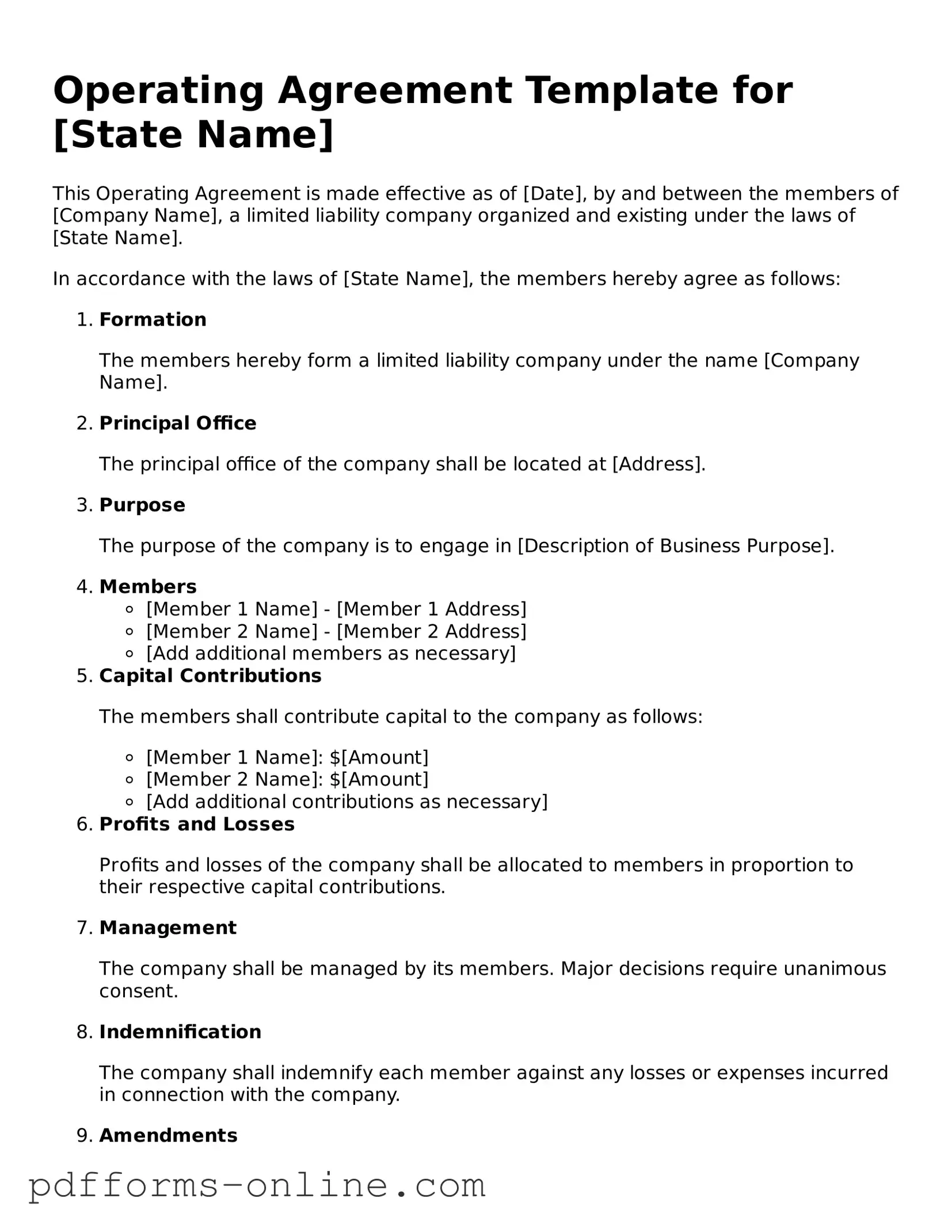The Operating Agreement is akin to a Partnership Agreement, which outlines the relationship between partners in a business venture. Just as the Operating Agreement defines the roles, responsibilities, and profit-sharing among members of a limited liability company (LLC), a Partnership Agreement serves a similar purpose for partners in a general or limited partnership. Both documents establish the framework for governance and decision-making, ensuring that all parties are aligned in their objectives and expectations.
Another document similar to the Operating Agreement is the Bylaws of a corporation. Bylaws govern the internal management of a corporation, detailing the roles of directors and officers, meeting protocols, and voting procedures. Like an Operating Agreement, Bylaws serve to clarify the structure and operational guidelines of an entity, promoting transparency and accountability among stakeholders.
The Shareholders Agreement also bears resemblance to the Operating Agreement. This document outlines the rights and obligations of shareholders in a corporation. It addresses issues such as share transfers, voting rights, and dispute resolution. Much like the Operating Agreement, it aims to protect the interests of all parties involved and ensure smooth governance within the entity.
A Joint Venture Agreement shares similarities with the Operating Agreement in that it governs a collaborative business endeavor between two or more parties. This document outlines the contributions, responsibilities, and profit-sharing arrangements of each party involved. Both agreements are essential for establishing clear expectations and minimizing conflicts in business relationships.
The LLC Membership Certificate serves a related purpose by formally recognizing an individual's ownership interest in an LLC. While the Operating Agreement details the operational aspects, the Membership Certificate provides proof of membership and may outline rights associated with ownership. Both documents work together to define the relationship between the members and the company.
A Non-Disclosure Agreement (NDA) can also be compared to the Operating Agreement in terms of protecting sensitive information. While the Operating Agreement focuses on the operational framework, an NDA is designed to safeguard proprietary information shared among parties. Both documents are essential for maintaining trust and confidentiality in business relationships.
The Employment Agreement is another document that parallels the Operating Agreement, particularly in how it defines the terms of employment for individuals within a company. This agreement outlines job responsibilities, compensation, and termination conditions. Similarly, the Operating Agreement delineates the roles of members within an LLC, ensuring clarity in expectations and responsibilities.
A Franchise Agreement shares characteristics with the Operating Agreement, especially in how it regulates the relationship between a franchisor and franchisee. This document specifies the rights and obligations of each party, including operational guidelines and branding standards. Both agreements aim to create a cohesive framework for business operations and protect the interests of all parties involved.
The Terms of Service (ToS) can also be likened to the Operating Agreement, particularly in digital businesses. The ToS outlines the rules and guidelines that users must agree to in order to access a service. Like the Operating Agreement, it sets expectations for behavior and responsibilities, helping to mitigate disputes and clarify the relationship between the service provider and the user.
Lastly, a Buy-Sell Agreement is similar to the Operating Agreement in that it governs the transfer of ownership interests in a business. This document outlines the conditions under which a member can sell their interest, ensuring that all parties understand the process and implications of ownership changes. Both agreements are vital for maintaining stability and continuity in business operations.
